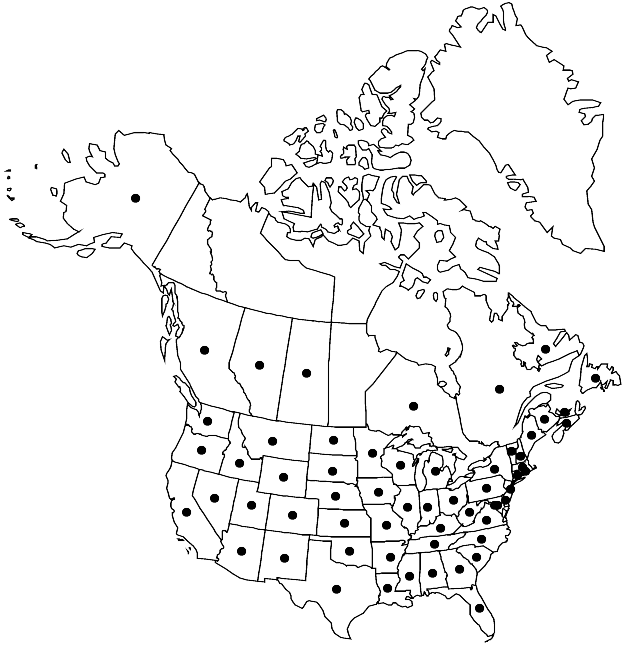Brassica nigra
in J. C. Röhling, Deutschl. Fl. ed. 3, 4: 713. 1833.
Annuals; sparsely to densely hirsute-hispid (at least basally, proximally rarely subglabrate). Stems usually branched distally, (widely spreading), 3–20 dm. Basal leaves: petiole to 10 cm; blade lyrate-pinnatifid to sinuate-lobed, 6–30 cm × 10–100 mm, lobes 1–3 each side, (smaller than terminal, terminal lobe ovate, obtuse). Cauline leaves sessile or subsessile; blade (ovate-elliptic to lanceolate, similar to basal, reduced distally and less divided), base tapered, not auriculate or amplexicaul, (margins entire to sinuate-serrate). Racemes not paniculately branched. Fruiting pedicels erect (straight), (2–) 3–5 (–6) mm. Flowers: sepals 4–6 (–7) × 1–1.5 mm; petals yellow, ovate, 7–11 (–13) × (2.5–) 3–4.5 (–5.5) mm, claw 3–6 mm, apex rounded; filaments 3.5–5 mm; anthers 1–1.5 mm. Fruits erect-ascending (± appressed to rachis), smooth, ± 4-angled, 1–2.5 (–2.7) cm × (1.5–) 2–3 (–4) mm; valvular segment 2–5 (–8) -seeded per locule, (0.4–) 0.8–2 (–2.5) cm, terminal segment seedless (linear, narrow), (1–) 2–5 (–6) mm. Seeds brown to black, 1.2–1.5 (–2) mm diam.; seed-coat coarsely reticulate, minutely alveolate, not mucilaginous when wetted. 2n = 16.
Phenology: Flowering Apr–Sep.
Habitat: Roadsides, disturbed areas, waste places, fields, orchards
Elevation: 0-1500 m
Distribution

Introduced; Alta., B.C., N.B., Nfld. and Labr., N.S., Ont., P.E.I., Que., Sask., Ala., Alaska, Ariz., Ark., Calif., Colo., Conn., Del., D.C., Fla., Ga., Idaho, Ill., Ind., Iowa, Kans., Ky., La., Maine, Md., Mass., Mich., Minn., Miss., Mo., Mont., Nebr., Nev., N.H., N.J., N.Mex., N.Y., N.C., N.Dak., Ohio, Okla., Oreg., Pa., R.I., S.C., S.Dak., Tenn., Tex., Utah, Vt., Va., Wash., W.Va., Wis., Wyo., Europe, Asia, Africa, also in Mexico, Central America, South America, Atlantic Islands, Australia
Discussion
Brassica nigra is widely cultivated as a condiment mustard. It is also a cosmopolitan weed especially common in the valleys of California (R. C. Rollins 1993). It occurs only sporadically in southern Canada but most frequently in Ontario and along the St. Lawrence River. Specimens from Alberta, Arkansas, Delaware, and South Carolina have not been observed.
Selected References
None.
Lower Taxa
"elongated" is not a number."thick" is not a number."dm" is not declared as a valid unit of measurement for this property.